| Umělec 2008/2 >> It’s About Illumination, Stupid - the Politics of Art in Bosnia and Herzegovina | Просмотр всех номеров | ||||||||||||
|
|||||||||||||
It’s About Illumination, Stupid - the Politics of Art in Bosnia and HerzegovinaUmělec 2008/201.02.2008 Damir Arsenijević | illumination | en cs de es |
|||||||||||||
|
It’s June 24, 2008 and, as we speak, the Sarajevo Center for Contemporary Art (SCCA) is being forced to leave the Sarajevo Academy of Fine Arts and move elsewhere. Why? The inspiration and illumination its hallowed portals have produced thus far is no longer suitable for the venerable building of the Academy of Fine Arts. Instead, a posh lighting shop will illuminate the former SCCA office afresh, offering a selection of sleek lamps and chandeliers. But this may not be a bad thing. Now the doors of the Academy of Fine Arts will open its door to a stream of visitors hitherto unseen in its building: yuppies, mafia, political elites and international community members. They are those who are fostering ‘transition’ in Bosnia and Herzegovina—those who have purchasing power in a society in which 44% of the population is unemployed and around 25% of the population lives below the poverty line; they will be flocking into the lighting shop. Who could claim that art in Bosnia and Herzegovina is not, in true postmodern vein, democratic—opening up and obliterating the distinction between high and low culture?
The alternative filtered illumination provided by post lighting fixtures in place of artistic inspiration, produce a situation reminiscent of the proverbial rabbit caught in the headlights. Mesmerized, the rabbit caught in the powerful beam of light is completely paralyzed and subsequently hit by the blazing oncoming car. The whole process does not take long—the moment of being rapt by the light probably lasts as long as it took for the Sarajevo Academy of Fine Arts to decide to replace the contemporary arts center with a bourgeois shop. The beam coming from the headlights is, in essence, capital—which is a general illumination, as Marx argues, bathing all other colors and modifying their particularity. In this light, the yuppie, the mafia boss, the politician and the international community member come together bathe in the joy spending as they fuel, similar to martyrs, the fast car of capitalism. If the Academy of Fine Arts were not so myopic and so lured by the prospect of short-term gains, it could have presented the whole ‘eviction’ as an ironic installation, commenting on the state of contemporary art in Bosnia and Herzegovina. It might have even applied for project funding from the international community. However, as things stand, the management of the Academy of Fine Arts is yet another rabbit—not even a passenger in the car. As things stand, it has, in fact, done the SCCA a favor by pushing it off the road just to observe that big, bright, oncoming, fast object from the sidelines. However, the bright light that mesmerizes exists only to cover up and to distract from the fact that behind the wheel there is no driver. In fact, even the car is illusory, and the light is mere sensory overload. Such sensory overload resembles what Marina Gržinić, after Jonathan L. Beller, calls the “absolute ‘sensualization’ of the contemporary neo-liberal emptiness within global capitalism.”1 Such emptiness dehumanizes (depoliticizes) sociality, causing the abstraction, formalization and emptying of what is perceived to be human. This is the “development of the human towards a mere form or a snobbish gesture without content”.2 The individual is lost—something larger and more blinding is controlling the game. Twelve years after the end of war, the “'sensualization' of emptiness,” the vacuum that haunts Bosnia and Herzegovina, is comprised of a combination of the collapse of socialism, war and the human loss that is entailed in it, the postwar neo-liberal capitalist transition and the victims of genocide whose bodies are still missing. One outcome of such an ‘estrangement’ is the construction and re-writing of the collective memory by the ruling ethno-nationalist elites, a group whose memories differ from the rest of the collective. Yet, as Dubravka Ugrešić writes, “[t]he political battle is a battle for the territory of collective memory,” and construction of the collective memory produces control.3 The territory of memory is the ‘ground’ on which Bosnia’s future will be built by those in control of the past. It is with the understanding of the de-politicizing chaos of multiple ‘memory transactions’, contradicting stories functioning like white noise, that postwar cultural production in Bosnia and Herzegovina should be analyzed. It What is/will/was ‘postwar’ in Bosnia and Herzegovina? Was it the signing of the Dayton Peace Agreement in late 1995 and the arrival of the international troops who were to secure peace? Was it the elections in 1996 that democratically installed and legitimized the ethno-nationalist elites? Or should it, perhaps, be viewed in the first, but short-lived, electoral victory of the Social Democrats in 2000? If we adopt a regional perspective, should we see the ‘postwar’ in the adoption of the Stability Pact in 1999,4 with its emphasis on regional cooperation and full integration of the member countries into the European Union? Or, indeed, with the current ‘war on terror’ (or the ‘long war’ as George Bush and Donald Rumsfeld called it in February 2006), in which the Bosnian government sided ‘With Us’, firstly, because of its huge dependency on ‘Western’ humanitarian aid; secondly, because of those of its citizens naturalized during the war, some of whom are suspected of terrorist links;5 thirdly, because of the war in Kosovo in 1999. In the sphere of culture, this question of ‘postwar’ gets even more problematic. The war has ushered in new modes of representation in artistic practices, and in the period after the war, culture’s main preoccupations are the traumatic experiences of the ‘postwar’ ‘transition’. Traumatic experiences, as Kali Tal remarks, are open to denial, alteration and medical treatment, in which these experiences are treated as a disease.6 Traumatic events are, therefore, either manipulated or attempts are made to ‘cure’ them or forget them. Thus, the artist, as a speaker, looses their individual voice. Their decisions are political acts and their point of view is supposed to represent a group rather then one voice. The post-war culture is supposed to be a collective with minimal to no variance, where individual arts are seen as a recession. Today, the field of cultural production in Bosnia and Herzegovina is a crossroads of memory, in which decisions as to which path to take, determining particular ways of bearing witness to trauma, need constantly to be made. Such decisions are, above all, ethical and political acts. The question that is posed here is how to analyze and thus, strengthen those poetic acts of trauma-witnessing that demythologize, de-“medicalize”, and reinforce memory, turning, as Shoshana Felman asserts, ‘trauma as experience into insight’ in order to provide us with new ways of thinking about traumatic experiences.7 Some of the most imaginative artistic practices are related to the reacquisition of traumatic experience, thus re-politicizing them. Jasmila Žbanić, Šejla Kamerić, Amra Bakšić-Čamo, and Tarik Samarah are some artists who have reflected upon their own traumas. It has been interestingly noted that some of the most critical artistic creations are the productions of a new generation of female artists and cultural activists.8 Given that this text accompanies Šejla Kameri’s exhibition ‘Is it rain or is it a hurricane’ I would like to touch upon some of her works that have the same concern as the work in this exhibition. The works presented in this exhibition can be viewed and understood as an act of witnessing to the social trauma, and how to artistically come to terms with trauma and the meanings of distressing events. Together with her work ‘Red’, which investigates ‘marks on the wall’ left by explosive devices, ‘Is it rain or is it a hurricane’ investigates marks left on plants—idle inscriptions of people’s names on cacti. The latter act of delving a mark into the flesh of a plant, though may seem destructive at first, is an act of remembering. The former is an act of remembering as well—but the question is—these traces are left for what kind of politics? The names inscribed on cacti evoke absences of people as individuals. Granite shrapnel marks evoke the horror of bio-political violence in its full expenditure of a human. ‘Is it rain or is it a hurricane’ is framed in the story of its title. The title comes from a line of a song by Darko Rundek. On the referential level, the song is an expression of one lover’s desire to say to another lover: ‘I don’t know/I don’t know’ ‘[w]hen she’s trying to know/Do you love her’. I don’t know is it rain or is it a hurricane I don’t know Baby I don’t know Autre chose Autre chose Il y’a autre chose Si tu oses Si tu oses Rouler hors des rails Bye Bye Baj Baj’ The question that is posed is: what is it that is inexpressible in ‘autre chose’—in that ‘other thing’? Confronted by female desire, the lover is faced with a personal lack. This is a ‘doubting’ lover who has realized—this is not it, there is something else, there’s another thing. The dialogic song ends with a goodbye, rendered in two different languages: to one’s bye, bye, the other lover replies with a mirror-image message, yet differently transcribed, pointing to the fact that this lover is a non-native speaker of the first lover’s language. This is a crux of lovers at the parting of their ways, the point when lovers stop speaking to one another. ‘Between two subjects there can be either speech or death’, as Moustapha Saffouan says. Yet, Kameri’s work precisely testifies to the moment where ‘death shall be no more’—of the continuation of dialogue through the inscription and evocation of names. Carving names into cacti is an act of addressing the absent other. This carving is an attempt to fill the void that this absence leaves. What is the fundamental void we are trying to fill, which just keeps returning to haunt us in the image of gaping scars that carry the stories of the materiality of pain inscribed in them? Is fidelity to these scars in effect fidelity to the pain and suffering and at the same time fidelity to the possibility of imagining an alternative, a different way of living and being? A future? The message inscribed into these scars speaks to us in order to tell us something about ourselves. Now, we must be ready to listen and to be disturbed. The alternative to being as we are now, of living differently always-already exists—what is important is the act of recognition that our current way of life is ‘non-all’. It is June 24th, 2008, and the hungry, the disenfranchised youth, the families of over 13 500 missing persons, the yuppies, the mafia, the political elites and the international community members create the memory of Bosnia and Herzegovina day in and day out. The question is—memory for who? To do what? The most hopeful and most productive memory of Bosnia and Herzegovina, nowadays illuminated through isolated artistic practices, is yet to be fully articulated—by a new political subject who can establish and carry out a transformative project. When the artist is kicked out, silenced by a light shop, who is to produce the kind of illumination not provided by a bulb? 1 Marina Gržinić, “Linking of theory, politics and art,” Contemporary art and nationalism: a reader, eds. Minna Henriksson and Sezgin Boynik (Prishtinë: Institute for contemporary art “Exit”; Centre for Humanistic Studies “Gani Bobi”, 2007). p. 105. 2 Ibid. p. 106. Gržinić argues this following Giorgio Agamben’s The Open. Man and Animal. 3 Ugrešić, “The Confiscation of Memory.” p. 227. 4 For more information, see http://www.stabilitypact.org. Particularly interesting for this discussion is the ‘Working Table on Democracy’ whose activities range from the media to education and gender issues. 5 For an interesting discussion of the extradition of six naturalised citizens in 2002; see Vildana Selimbegović, “Građani Pukovnika Muderisa,” BH Dani 15 February 2002. 6 See Kali Tal, Worlds of Hurt: Reading the Literatures of Trauma (Cambridge: Cambridge University Press, 1996). 7 Shoshana Felman, The Juridical Unconscious: Trials and Traumas in the Twentieth Century (Cambridge, Massachusetts and London: Harvard University Press, 2002). p. 8. 8 For an interesting analysis see Jasmina Husanović, “At the Interstices of Past, Present, and Future: Cultural Artistic Practices of Traversal in the Work of Šejla Kamerić, Jasmila Žbanić, and Amra Bakšić-Čamo,” Leap into the City: Chisinau, Sofia, Pristina, Sarajevo, Warsaw, Zagreb, Ljubljana-Cultural Positions, Political Conditions: Seven Scenes from Europe, eds. Katrin Klingan and Ines Kappert (Cologne: DuMont Literatur und Kunst Verlag, 2006).
01.02.2008
Рекомендуемые статьи
|
|||||||||||||
|
04.02.2020 10:17
Letošní 50. ročník Art Basel přilákal celkem 93 000 návštěvníků a sběratelů z 80 zemí světa. 290 prémiových galerií představilo umělecká díla od počátku 20. století až po současnost. Hlavní sektor přehlídky, tradičně v prvním patře výstavního prostoru, představil 232 předních galerií z celého světa nabízející umění nejvyšší kvality. Veletrh ukázal vzestupný trend prodeje prostřednictvím galerií jak soukromým sbírkám, tak i institucím. Kromě hlavního veletrhu stály za návštěvu i ty přidružené: Volta, Liste a Photo Basel, k tomu doprovodné programy a výstavy v místních institucích, které kvalitou daleko přesahují hranice města tj. Kunsthalle Basel, Kunstmuseum, Tinguely muzeum nebo Fondation Beyeler.
|







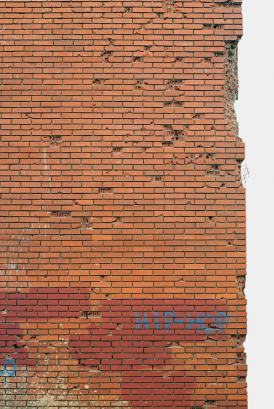
















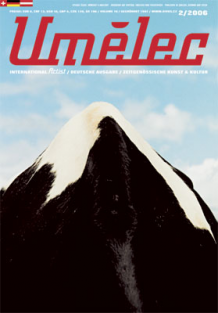




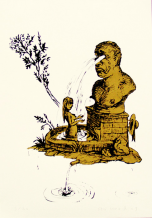
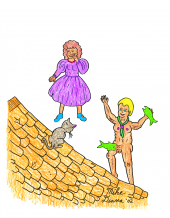
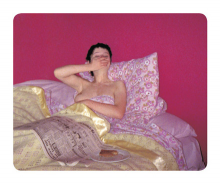
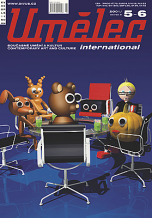


 New book by I.M.Jirous in English at our online bookshop.
New book by I.M.Jirous in English at our online bookshop.
Комментарии
Статья не была прокомментированаДобавить новый комментарий